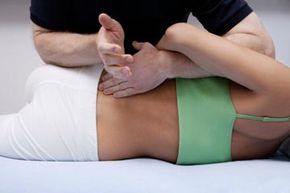Running is a healthy activity, right? It can improve your endurance, lower your blood pressure and cholesterol, help you lose weight and improve your mood. Those who run regularly, either for fitness or as a hobby, swear by the physical and mental gifts it bestows. But despite its advantages, running can come with a few undesirable side effects like runner's knee, shin splints and tendonitis.
Injuries like the kinds runners experience -- as well as the repetitive motion of running -- can cause fascia (fibrous connective tissue in the body) to tighten and put pressure on muscles, joints and nerves, increasing your risk of further injury. Deep fascia, the type that surrounds muscles, bones and nerves, can cause particular problems to runners when it tightens because it's the type of fascia that has the biggest impact on mobility [source: Ivanic].
Advertisement
Suddenly, your healthy activity doesn't feel so healthy.
Don't worry -- fascial tightening is easily treated, and you can even take care of it yourself, if necessary. However, you might want to start by visiting a physical therapist or a massage therapist who specializes in myofascial release. The therapist will use sustained pressure on the skin to literally loosen the tight fascia beneath. He or she can do this through either a direct or indirect method. With less pressure, indirect myofascial release is gentler, using continuous contact to increase circulation and help the tissue loosen itself. With myofascial release practices, it's unlikely that the therapist will use massage oil. This way, he or she can better seek out and manipulate fascial tightening and determine the proper amount of pressure to apply.
If you want to try myofascial release on your own, you can do so with the aid of a foam roller, which you can purchase online, through a health supplies shop or at some sports stores. The rollers allow you to use your own body weight to apply pressure to different regions of your body. If done correctly, foam rollers can help you achieve the same kind pain relief and myofasical release that you would receive from a myofascial release massage.
We have lots more information on the next page.
Advertisement


